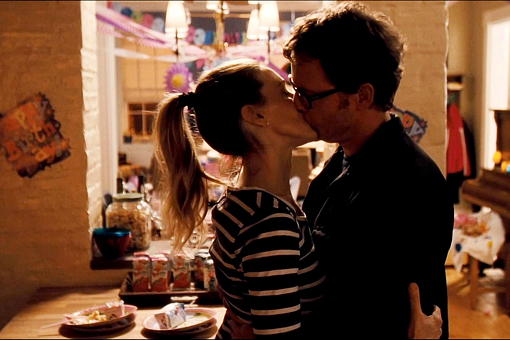By Sunny Choi · September 18, 2011

When I first saw a poster for I Don’t Know How She Does It, I automatically assumed that it would be a typical Sarah Jessica Parker chick flick in which she obtains the perfect guy. I expected to see a married Carrie Bradshaw struggling to shoulder the multiple duties that follow motherhood and a high-powered executive position. Believe it or not, Kate Reddy (Parker) has already found her perfect guy and her perfect job. This film is actually closer to a family drama than a chick flick, as it addresses not only the plight of the modern working mother but also women as primary breadwinners. It addresses the tension between women’s socially assigned role as the matriarch caregiver and her own professional responsibility. And the film begs the question, are these two types of responsibility mutually exclusive? While I Don’t Know How She Does It poses many interesting questions and admirably portrays the working mother, it misuses the mockumentary format and fails to develop its talented supporting cast.
Kate Reddy struggles to juggle her obligations to the two most polarized worlds. Fellow financial analysts view her as scatterbrained and excessively consumed with her familial obligations. If her work were to suffer even just a bit, her smug male colleague Bunce (Seth Meyers) would intervene and overemphasize any of her mistakes to gain an advantage. Meanwhile, the stay-at-home moms (the film humorously labels them as the “momsters”) critique her unkempt hair and her store bought pie that she dared bring to the bake sale. Under the pressure of PTA royalty, Kate crushes and smothers a deli store with powdered sugar in hopes to pass it as a homemade pie.
After landing a consultant job for a New York fund corporation, Kate realizes that her home life is suffering. Even her extremely patient and loving husband (Greg Kinnear) begins to find her balancing act increasingly absurd. Throughout the film, Kate must reassess her priorities in order to decide whether she can continue her rigorous balancing act between her family and career and if she even needs to choose between the two.
I was worried that this film would follow the modern trend of ridiculing the stay-at-home mom and glorifying working women. Instead, it satirizes both extreme ends of the debate. As the worst stereotype of the housewife, Wendy Best (Busy Phillips) spends five hours at the gym everyday and binges on pecan pies to cope with the frustrations of being the perfect matriarch. On the other hand, Kate’s junior financial analyst, Momo Hahn (Olivia Munn), repeatedly grimaces at Kate’s display of affection for her children. While society labels female “jugglers” like Kate as insane and overambitious, the audience realizes that those who are completely set in singular paths are even more ludicrous. Even though most of us are not as ambitious as Kate, we come to identify more with Kate’s dire wish to find a compromise between both worlds.
Even though most working mothers, let alone mothers in general, are not high-powered professionals, they strive to master the art of multitasking. Allison (Christina Hendricks), as Kate’s confidante, best friend, and fellow working mom, observes that when men take time off from work, they are heralded as the Father of the Year. On the other hand, women who take time off from work for childcare are seen as incompetent and disorganized. At times, the film exaggerated their plight, nearly lending itself to self-importance and obnoxiousness. In one scene, Allison asserts that working moms rank just above felons and convicts. I would strongly disagree with this, as working moms comprise a majority of many modern American families.
Although Hendricks gave a compelling performance and spoke some of the most profound lines, we didn’t learn enough about her. We never find out what exactly her profession is (presumably a lawyer, as Kate mentions that Allison has depositions to write) and if she has a boy or girl, but this was excluded form the picture, most likely to reduce production costs. On the other hand, the film grants Munn a subplot, despite her flat and uninteresting performance that replicated deadpan humor of April Ludgate from Parks and Recreation, probably to garner the interest of 18-34 year old men who otherwise would not be interested in this movie. Despite his good performance, Greg Kinnear’s role as the husband largely remains a flat, uninteresting character that Kate can dump her problems upon, regardless of how ridiculous the situation is. Jane Curtin, as the unsupportive mother-in-law, steals the scene with a couple of snarky, incendiary dialogues, especially when she blames Kate’s busy work schedule for her son’s delayed speech. I wish they would have expounded on her character instead of focusing so much on the boring character types of Kate’s husband and irritable type-A colleague. In this manner, the film fails to strategically utilize the talents of its supporting cast.
The mockumentary style seemed like a desperate attempt to supplement a mild plot. Otherwise, the audience would quickly tire of SJP skipping back and forth between soulless yuppies and her kids and husband. While this format was successful for Parks and Recreation and The Office, those two shows feature fully developed characters and dynamic, varied storylines. Instead of showing their various interactions with Kate or their respective lives, these interviews served as talking heads in the same exact setting–Allison at her work desk and Wendy on the elliptical.